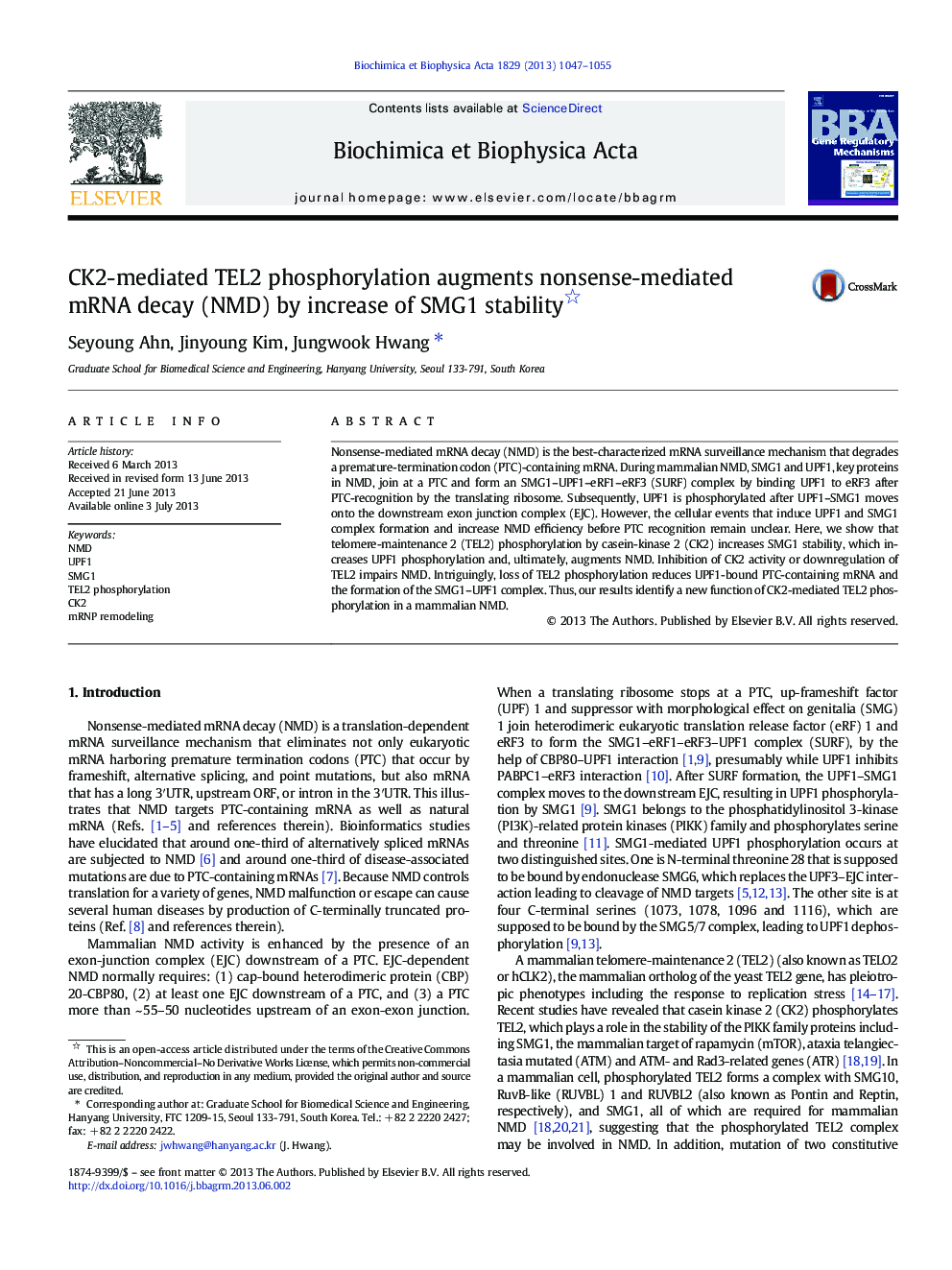| Article ID | Journal | Published Year | Pages | File Type |
|---|---|---|---|---|
| 10799235 | Biochimica et Biophysica Acta (BBA) - Gene Regulatory Mechanisms | 2013 | 9 Pages |
Abstract
Nonsense-mediated mRNA decay (NMD) is the best-characterized mRNA surveillance mechanism that degrades a premature-termination codon (PTC)-containing mRNA. During mammalian NMD, SMG1 and UPF1, key proteins in NMD, join at a PTC and form an SMG1-UPF1-eRF1-eRF3 (SURF) complex by binding UPF1 to eRF3 after PTC-recognition by the translating ribosome. Subsequently, UPF1 is phosphorylated after UPF1-SMG1 moves onto the downstream exon junction complex (EJC). However, the cellular events that induce UPF1 and SMG1 complex formation and increase NMD efficiency before PTC recognition remain unclear. Here, we show that telomere-maintenance 2 (TEL2) phosphorylation by casein-kinase 2 (CK2) increases SMG1 stability, which increases UPF1 phosphorylation and, ultimately, augments NMD. Inhibition of CK2 activity or downregulation of TEL2 impairs NMD. Intriguingly, loss of TEL2 phosphorylation reduces UPF1-bound PTC-containing mRNA and the formation of the SMG1-UPF1 complex. Thus, our results identify a new function of CK2-mediated TEL2 phosphorylation in a mammalian NMD.
Related Topics
Life Sciences
Biochemistry, Genetics and Molecular Biology
Biochemistry
Authors
Seyoung Ahn, Jinyoung Kim, Jungwook Hwang,
